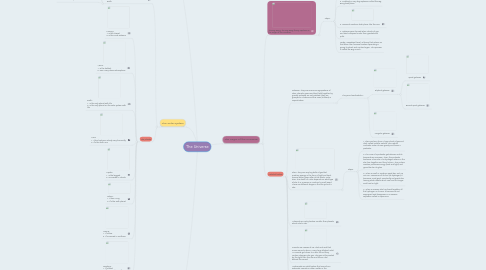
1. More info:
2. The Milky Way
2.1. Today we know that the Earth and the Solar System are located within the Milky Way. Our galaxy is part of a cluster known as the Local Group. This is, in turn, part of the Virgo Supercluster, which contains more than 2 000 galaxies.
2.2. The Milky Way is a barred spiral galaxy which has a central bar-shaped structure composed of stars and several curved extensions called arms. Our solar system is located in the Orion Arm of the galaxy.
3. The Solar System
3.1. The Sun is the source of energy for all life on Earth.
3.1.1. The Core: produces energy by converting hydrogen to helium
3.1.2. The radioactive and convection zones: This energy moves through the radiation and convection zones towards the outer layers of the Sun: the photosphere and the cromosphere.
3.1.3. The outermost layer of the Sun is the corona.
3.2. The planets
3.2.1. Mercury: 1. Is the closest 2. Is the most extreme
3.2.2. Venus: 1. Is the hottest 2. Has a very dense atmosphere
3.2.3. Earth: 1. Is the only planet with life 2. Is the only planet on the solar system with life
3.2.4. Mars: 1. It had volcanic activity very frecuently 2. It´s the forth one
3.2.5. Jupiter: 1. Is the biggest 2. Is covered in clouds
3.2.6. Saturn: 1. It has a ring 2. It´s the sixth planet
3.2.7. Uranus: 1. It´s blue. 2. It´s covered in methane
3.2.8. Neptune: 1. It´s tilted 2. It´s covered in methane
4. The origin of the Universe:
4.1. The Big Bang: The Big Bang theory explains us the origin of the Universe.
4.1.1. Steps:
4.1.1.1. 1. 13.700 million years ago, before the Big Bang, all the matter and all the energy of the Universe was all condensed in a very small point.
4.1.1.2. 2. Suddenly, a very big explosion called the Big Bang took place.
4.1.1.3. 3. Quimical reactions took place, like this one.
4.1.1.4. 4. Galaxies were formed when clouds of gas and dust collapsed under their gravitational pulls.
4.1.1.5. Today: nowadays there´s a theory that exlains us that when the Universe finishes expanding is going to shrink and contract again. This process is called the Big Crunch.
4.2. Celestial bodies
4.2.1. Galaxies: They are enormous agrupations of stars, planets, gases and dust held together by gravity. Galaxies are not isolated, they are grouped in clusters and this ones (clusters) in superclusters.
4.2.1.1. They are classificated in:
4.2.1.1.1. Eliptical galaxies
4.2.1.1.2. Irregular galaxies
4.2.2. Stars: They are very big balls of gas that produce energy in the form of light and heat. Several billion years after its life starts, a star dies. The death of a star depends on what type of star it is: massive or medium to small-sized. There are different stages in the life cycle of a star:
4.2.2.1. Steps:
4.2.2.1.1. 1. Stars are born from a huge cloud of gas and dust, called a stellar nebula. The nebula contracts under its own gravity and forms a protostar.
4.2.2.1.2. 2. The core of a protostar gets denser and its temperature increases. Then, the protostar becomes a true star. The hydrogen atoms in the star fuse together and form helium. This nuclear reaction produces energy (heat and light) and gives the star its glow
4.2.2.1.3. 3. When a small or medium-sized star, such as our Sun, consumes all its fuel (its hydrogen) it becomes a red giant. Eventually red giants die, leaving white dwarfs which cool and no longer emit heat or light.
4.2.2.1.4. 4. When a massive star has fused together all the hydrogen in its core, it becomes a red supergiant and disappears in a massive explosion called a supernova.
4.2.3. Asteroids are rocky bodies, smaller than planets, which orbit a star.
4.2.4. Comets are masses of ice, dust and rock that move around a star in a very long elliptical orbit. As comets get closer to a star, the ice they contain changes into gas. This gas is illuminated by the light from the star and forms a tail behind the comet.
4.2.5. Meteoroids are solid bodies that come from asteroids, comets or other matter in the Universe. When a meteoroid enters the Earth’s atmosphere, it usually burns up and disintegrates, becoming a meteor, also called a shooting star. The pieces which reach and hit the Earth’s surface are called meteorites.
4.2.6. Satellites or moons are celestial bodies that orbit planets or dwarf planets. They do not emit their own light either.
